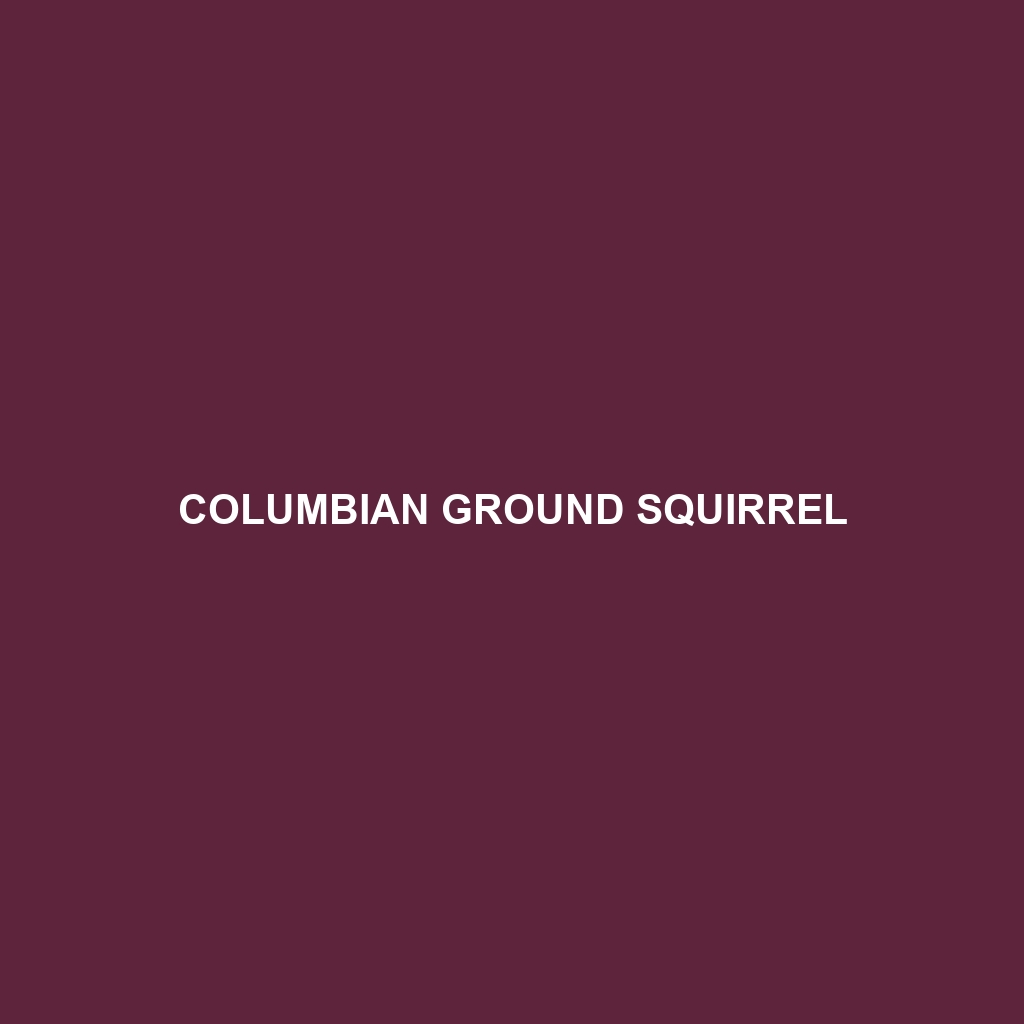Columbian Ground Squirrel: A Comprehensive Overview
Common Name: Columbian Ground Squirrel
Scientific Name: Spermophilus columbianus
Habitat
The Columbian Ground Squirrel is primarily found in the mountain regions of western North America, particularly in the Canadian provinces of British Columbia and Alberta, as well as in parts of the United States, including Montana and Idaho. These squirrels inhabit grasslands, meadows, and open forests, often creating complex burrow systems that provide safety from predators and harsh weather conditions.
Physical Characteristics
Columbian Ground Squirrels are medium-sized rodents, typically measuring between 9 to 11 inches in length. They have a distinct fur coloration that ranges from light brown to gray, with a cream-colored underside. Their bodies are stocky, with short legs and a bushy tail. The most notable feature is the white stripe along their forehead and side, which distinguishes them from other ground squirrel species.
Behavior
These ground squirrels are diurnal, meaning they are active during the day, often seen basking in the sun or foraging for food. They are known for their burrowing behavior, which includes creating extensive tunnel systems for habitation and safety. Socially, Columbian Ground Squirrels exhibit colonial living, often forming groups, and engaging in communicative behaviors such as chirps and whistles to alert each other of peril.
Diet
Columbian Ground Squirrels are herbivores, primarily feeding on a diet that includes grasses, seeds, and various wildflowers. They particularly enjoy clover and dandelions during the growing season. Their feeding habits are crucial for the ecosystem, as they help in seed dispersal and maintaining plant diversity.
Reproduction
The breeding season for Columbian Ground Squirrels typically occurs in late spring. Female squirrels give birth to litters ranging from 3 to 9 offspring after a gestation period of about 30 days. The young are altricial, meaning they are born hairless and blind, relying on their mother for nutrition and protection until they are mature enough to emerge from the burrow.
Conservation Status
Currently, the Columbian Ground Squirrel is classified as a species of “Least Concern” by the International Union for Conservation of Nature (IUCN). However, certain local populations face threats due to habitat loss and fragmentation, making conservation efforts essential to ensure their survival.
Interesting Facts
– Columbian Ground Squirrels can enter a state of torpor, lowering their metabolic rate during extreme weather conditions.
– They play a significant role as prey for various predators, including hawks, coyotes, and badgers, thereby contributing to the food web of their ecosystems.
Role in Ecosystem
As a key species in their ecosystem, Columbian Ground Squirrels facilitate soil aeration through their burrowing activities, which helps in water infiltration and nutrient distribution. They also serve as a food source for numerous predators, thereby maintaining ecological balance. Their foraging habits promote plant diversity, which can enhance the habitat for other animal species.
